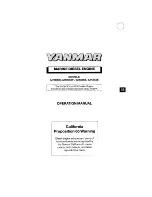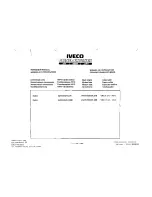
Recommended Props
Always tighten prop bolts and inspect your prop and spinner before each flight!
Avoid large/heavy load props during the break-in period. Regardless of size or brand, it is important
to not overload the engine during break-in. Check the rpm on the first run and make sure it is
around
6,200 rpm or higher. Be more concerned about overloading the engine than over revving it.
The optimum prop for your aircraft will depend on exhaust type, airframe weight, airframe size/drag,
altitude, and your flying style. After break-in, we have found the optimum static RPM range for good
performance is 6,000 to 6,700 depending on prop and exhaust selection.
Some recommended break-in props are:
Menz 26x10, Mejzlik 26x10, Mejzlik 27x10TH, 24x10 Mejzlik 3 blade
Some recommended props after break-in are all of the above as well as:
26x12 Mejzlik, 26x12 Menz, 26x10 Xoar, 25x12 AirModels 3 blade.
If a tuned pipe system is used, all props listed above can be used along with:
27x10 Mejzlik, 27x10 Menz, 27x10, Xoar, 28x10 Mejzlik, 24x12 Mejzlik 3 blade, 24x12W Mejzlik
3 blade.
Lower rpm normally equals less prop and engine noise, but less power. A 3 blade prop just over
6,000 RPM can be very quiet. Smaller diameter props (less tip speed) and more pitch (more
load/less rpm) will reduce noise. 3 blade props normally have less diameter and more load from the
pitch and extra blade. This normally makes them the quietest props.
2 blade props above 6,400 rpm will develop a lot of power. You may find that you prefer the higher
revving break-in size props, even after break-in.
A general rule of thumb for good flight performance is the larger and/or heavier the plane, the lighter
the prop load to allow the engine to create more horse power. On a lighter/smaller/cleaner airframe
horsepower requirements are not as critical. You may enjoy the benefits of a larger prop disc for
better down line braking, torque rolling, etc.
Always use a drill guide to drill your props. We normally drill from the back side, then again from the
front to insure the screws don’t bind in the holes.
Always check the balance of your prop.
For safety, we recommend painting the tips of you props (front and back) with a bright color,
especially black props.
Never use a damaged or repaired prop, or a prop that has struck the ground or any other object.
Damage that can be hard to see could turn into disaster when turning at thousands of RPM.
5





























